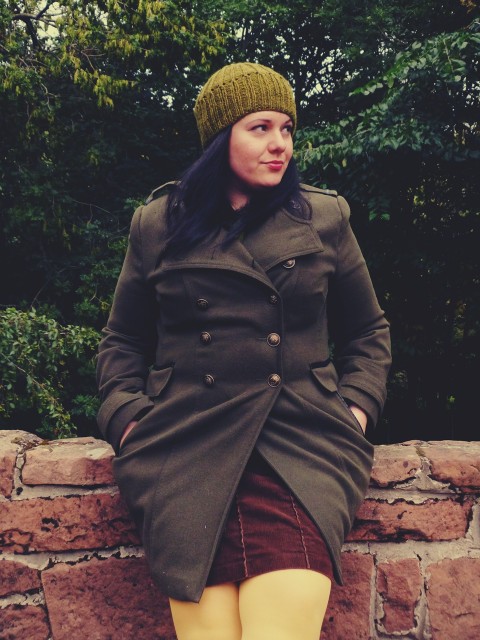Over the last couple of months of using Instagram regularly I've noticed something. I feel happier and relaxed when I wear something I have made. And so my thoughts turn towards the fabric stash and wanting to make things that will continue to make me happier and more relaxed. Reader, I bought a sewing pattern with a view to make some wardrobe basics that'll keep me as happy as my knitted items. But what about knitting?
Knitting is my first love and I am so lucky that I get to design what I want to wear - and share it with everyone! Wearing what I make is the best feeling (and I've started using #wearwhatyoumake as my own personal hashtag to track my handmade wardrobe adventure) and it's something I'm thinking hard about for 2016 too. Simply put: I want what I design & make to be easily integrated into an everyday wardrobe.
I recently spent some time going through my clothes. It's a good exercise that keeps me aware of what I own, what I treasure, and what I keep wearing. I do this semi-frequently and I always learn something from doing it.
Observations:
- Colours lean towards teal, navy, mustard, and deep cool reds. Neutrals are navy blue and brown.
- I tend to wear dresses more than anything.
- I wear the denim, skirts and the cord skirts most. Pencil skirts get most wear.
- I own two pairs of trousers (1 pair of jeans, one linen) which I rarely wear.
- Three cardigans get most wear: the Stevie Cardigan (knitted in navy Rowan Wool Cotton) is beginning to show wear & tear; my brilliant Scollay cardigan; and the mustard yellow Hetty cardigan which goes with everything.
- I still wear shawls but I have grown fond of very big shawls recently - I tend to wear Proserpine, Fika (currently floating around Britain as a sample - I miss it), Swale and Kirkja (it's smaller but mustard yellow).
- I shy away from cute patterns (owls, deer, moustaches) but love geometric patterns. Mostly I like to wear things made from plain fabrics.
From the observations, I have learned the following lessons:
- I love bold colour combinations.
- I need more cropped cardigans.
- I need another navy cardigan and another mustard yellow cardigan.
- And a brown cardigan. And a teal one.
- I need to add pockets to skirts & dresses. Pockets are brilliant, yet rarely appear in high street women's wear.
- I need to make myself more skirts (I've said this every year since 1989 or thereabouts).
- Handmade makes me happiest.
Obviously there are problems surrounding a handmade wardrobe: slow fashion takes time, money, and skill. I am privileged because I can devote time to building a handmade wardrobe (and can justify it by calling it work). Not everybody can do that and that is okay. A good place to start is to wear what you make (and think about whether you'll wear what you are making) - but that is something I'll explore in the next instalment!
Happy November, everyone!





 Well, first of all, the Fika shawl is now
Well, first of all, the Fika shawl is now